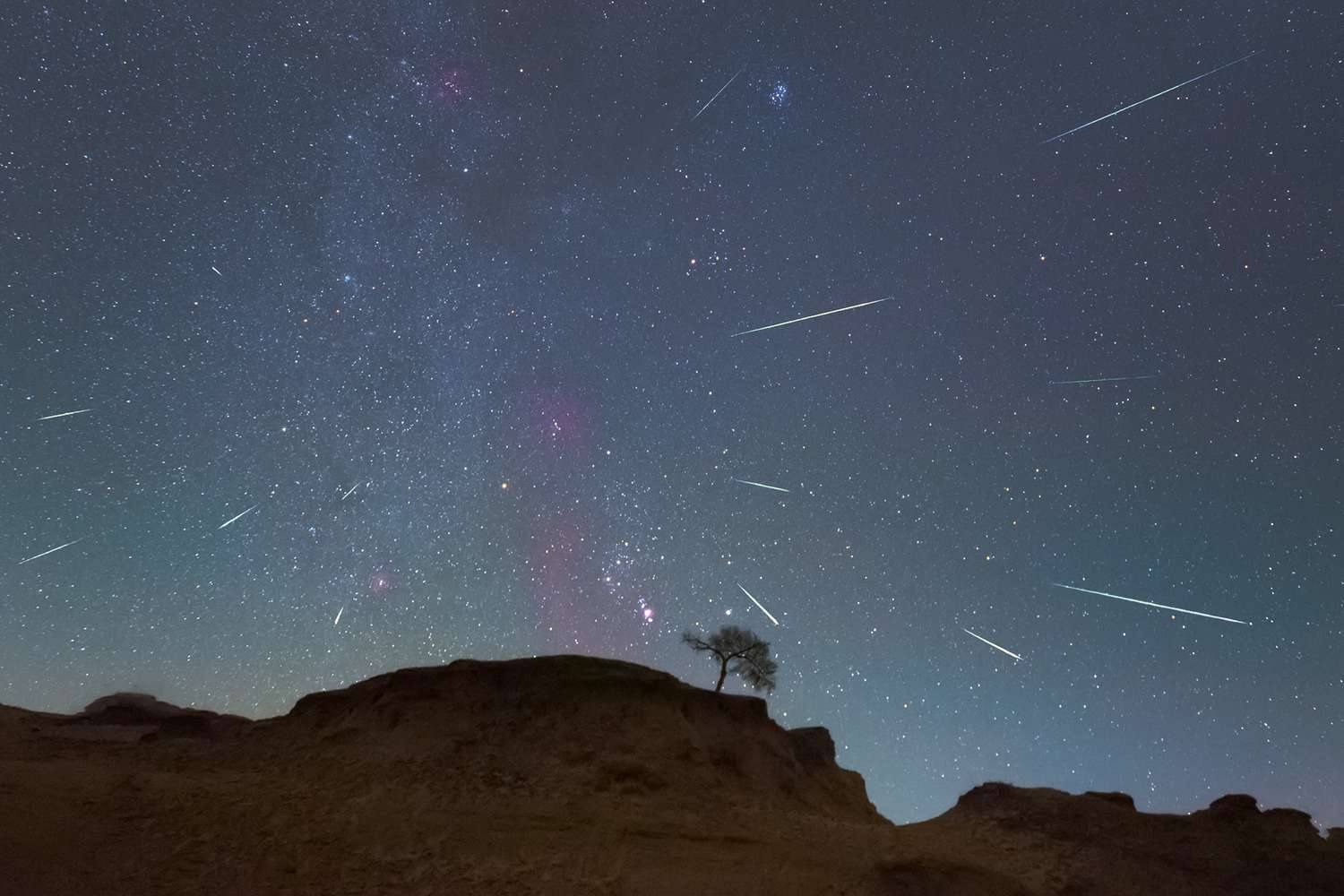2023 Orionids Meteor Shower - Prime Viewing Tips
Experience the celestial wonder of the 2023 Orionids meteor shower! Find peak times and tips for this breathtaking annual event.
Author:Rhyley CarneyReviewer:Paula M. GrahamOct 20, 202316.6K Shares286.8K Views

The 2023 Orionids meteor showerwill illuminate the night sky this weekend, offering stargazers an annual opportunity to witness one of the year's most magnificent celestial events.
Each year, during mid-October, the Orionids meteor shower graces our skies. NASA attributes this meteor display to Earth's passage through the remnants of dust and particles left in the wake of Halley's Comet.
"NASA calls the Orionids the prettiest showers of the year," says Dr. Emily Wright, an astronomer at the NASA Ames Research Center. "The meteor shower is often confused for shooting stars because it leaves light trails in its wake. The Orionids can also make fireballs, which are bright meteors that are visible."
While the American Meteor Society predicts a moderate intensity of 15-20 meteors per hour, some recent observers have reported three times that number, making this event even more enticing.
This year's Orionids meteor shower will extend until November 22, overlapping with the Northern Taurids meteors' peak on November 11-12. If you're eager to catch this celestial spectacle, here's when and where to watch:
2023 Orionids Meteor Shower Prime Viewing Times
Predicted Peak - The Orionids meteor shower is predicted to reach its peak on October 22, 2023, at 00:05 UTC.
The Orionids meteor shower will be at its peak during the pre-dawn hours of October 21 and October 22. The optimal viewing window falls between midnight and just before dawn, maximizing your chances of experiencing this cosmic phenomenon.
"You can watch from anywhere in the U.S.; however, finding an open area to look at the sky would be best," advises Dr. Sarah Collins, an astronomer and author of "Stargazing Made Easy." "Under a dark sky with no moon will give you the best view of the shower."
Tips For Watching The 2023 Orionids Meteor Shower
No specialized equipment like telescopes or binoculars is required to relish the Orionids meteor shower, as Space.com confirms. To prepare, give your eyes about 30 minutes to adapt to the darkness by staying outdoors.
The American Meteor Society recommends a comfortable reclining chair as the best vantage point. Position your gaze about halfway up the sky to optimize your chances of seeing meteors. Only direct your view straight upward if your local horizon remains brightly lit. Nevertheless, the majority of meteors will streak across the lower half of the sky.
Clear skies are paramount for optimal visibility of the Orionids. "The moon will be illuminated at 37% during the shower," reports Space.com. This moonlight can potentially hinder your viewing experience, so be sure to choose your viewing location wisely.
The Orionids meteor shower offers a captivating celestial display that requires little more than a dark, open space and patience. Head outdoors during the specified hours and take in the breathtaking beauty of this annual astronomical event.
With its dazzling meteor trails and potential for fireballs, the Orionids meteor shower promises to be a visual treat for skywatchers across the United States. So, mark your calendars for October 21 and 22, find a suitable viewing spot, and immerse yourself in the wonders of the cosmos. Whether you're an amateur astronomer or simply a lover of natural phenomena, this celestial event is not to be missed.
As Dr. Wright aptly puts it, "The Orionids meteor shower is a reminder of the beauty and grandeur of our universe, and it's a chance for anyone, regardless of their level of expertise, to connect with the cosmos and appreciate the wonders above."

Rhyley Carney
Author

Paula M. Graham
Reviewer
Latest Articles
Popular Articles